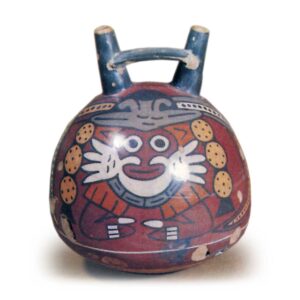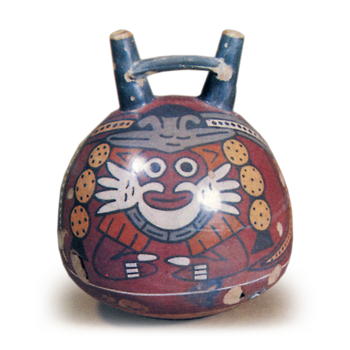
This pottery belongs to the culture that emerged after the Chavin culture in the southern Peruvian Andes. It is thought to date from about the same period as Mochica pottery, from the early A.D. to the 10th century. The surface is thin and polished, and the body is not as bulged as that of Mochica earthenware. There are no molded patterns. The round pots are characterized by two cylindrical spouts connected by thick bridges. There are also many other pots of various shapes. Late examples have a circular bottom and outwardly curved sides. Some have a single spout supported by a bridge, and some have two handles on each shoulder. The surface is multicolored, with four to eight colors counted on the slip. Black, white, red, yellow, brown, gray, and purple are usually used, and black is often used to border the pattern. Early slips were red, and gradually white was used. There are two types of designs: highly formalized bird, fish, and fruit series, and religiously inspired monsters and heads. (Bushell, “Ancient American Pottery”)



